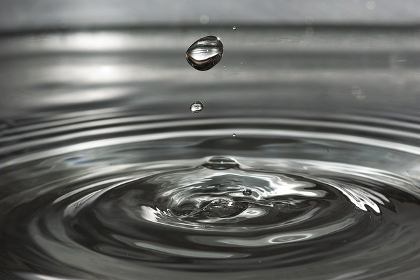The mainstream conversation on climate change is dry, brittle, and thirsty for answers. Dr. Michal Kravčík, the Slovakian hydrologist and climate expert, says the solution lies with rainwater – a critical missing link to restoring the broken land-based water cycles that are currently contributing to climate change.
We recently spoke with Dr. Kravčík and Jan Lambert, author of Water, Land and Climate: The Critical Connection, to discuss Kravčík’s 2017 North American speaking tour on renewing water cycles.
As they examine climate change, most writers in the media – and many climate activists – focus on the urgency of reducing fossil fuel emissions. But Kravčík and many fellow hydrologists see a different reason for why our storms, droughts, and floods are getting worse. They point to our severely damaged small water cycles.
Kravčík suggests a “new water paradigm,” in which more rainwater is retained in local, small water cycles instead of draining into large bodies of water as it does now. He argues that moving toward this paradigm can induce a massive shift in the regulation of atmospheric temperatures. This may sound complicated, but the fundamental science is actually quite elementary.
In a healthy small water cycle, precipitation is captured in soils, vegetation and groundwater systems, transpired by plants, and evaporated back up to the atmosphere – where it again falls as precipitation over the same environment.
Human interference – in the form of industrial agriculture, extensive paving of roads, large drainage systems, etc. – has impaired the land’s ability to retain precipitation. It now leaves the small water cycle as runoff and enters the large water cycle, moving over oceans and continents. That shift in water resources from the small to the large cycle is contributing to sea level rise and an increase of extreme precipitation events on land, including droughts and floods.
Jan Lambert comments, “It’s assumed that water cycles are just there and humans have little or no impact – yet we have altered small water cycles enormously.”
Those small water cycles have a crucial impact on local precipitation patterns, much greater than the large water cycle. The good news is that if we restore the small water cycle’s ability to retain and recycle more rainwater locally, we can reduce extreme weather events and cool local climates.
Dr. Kravčík is not only a hydrologist, but also a land manager. He’s collaborated on a number of landscape restoration projects in Slovakia, re-balancing local water cycles. Kravčík states that the single largest way that humans interfere in water cycles is conventional agriculture: depleted soils are unable to store rainwater, leading to massive amounts of surface runoff.
Meanwhile, in urban areas, rainwater is treated as a waste product rather than a resource.
Conventional techniques for managing stormwater typically divert rain into streams, rivers, and ultimately the ocean. Better approaches would repair the land’s ability to absorb and store rain so it can replenish the small water cycle.
Kravčík believes that the work begins at the grassroots level: “The good news is that there are multiple ways to retain rainwater. It’s a matter of getting people to understand that action can be taken on an individual level, as well as with international agreements.”
Michal Kravčík will be speaking at several events around Boston from March 26 to 31, 2017. Learn more about his
tour here and visit
Voices of Water for Climate for more information.
-Jacqueline Sussman
Thinking Beyond Carbon
Breaking down the science of Australian soil microbiologist, Walter Jehne, and others, farmer George King states in a recent post that we can reverse climate change by regenerating the planet’s soils and biosystems. He argues that not only can we affordably reverse damages to hydrological cycles – we can also produce more food in the process.

